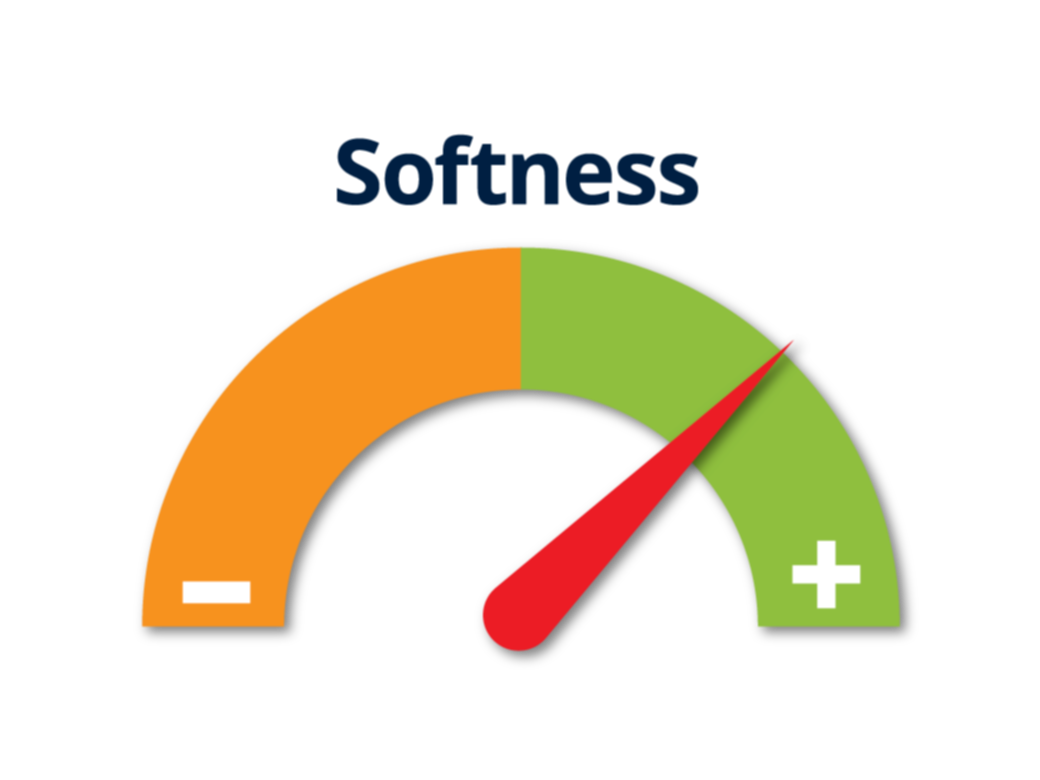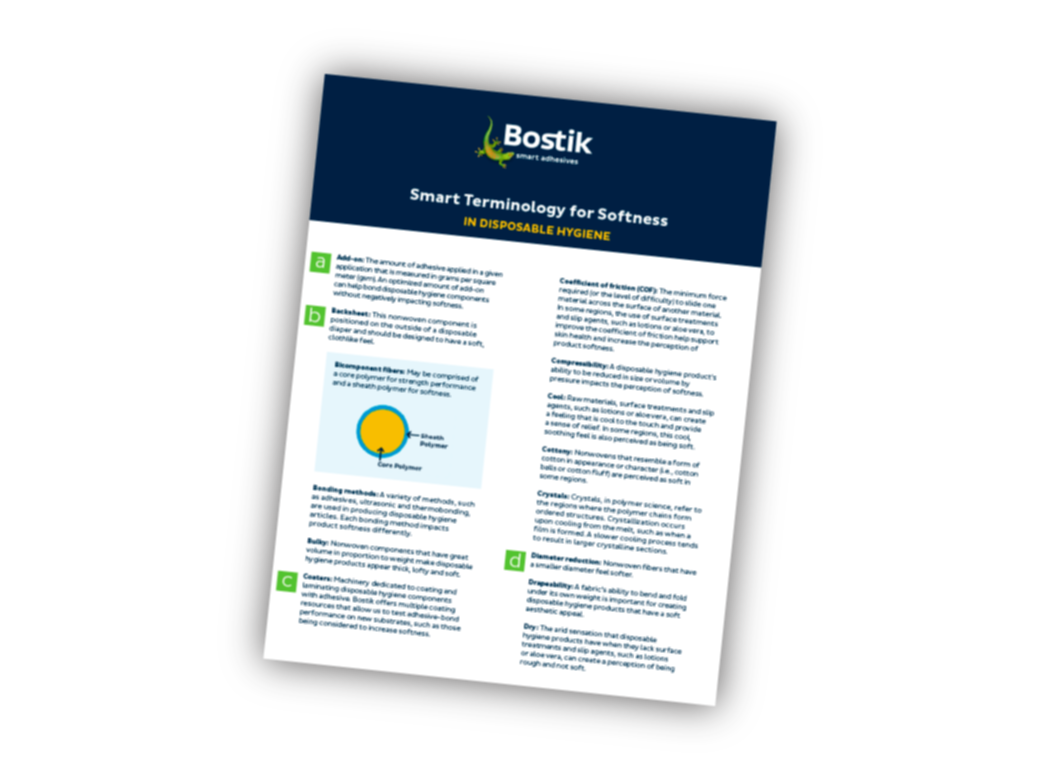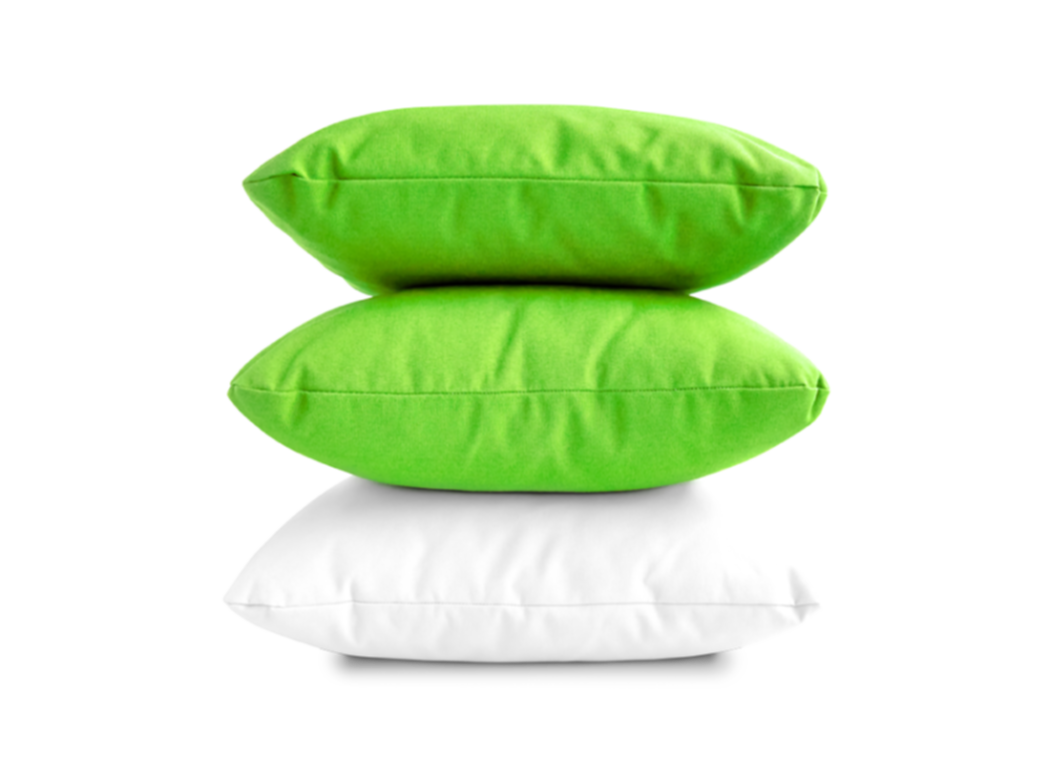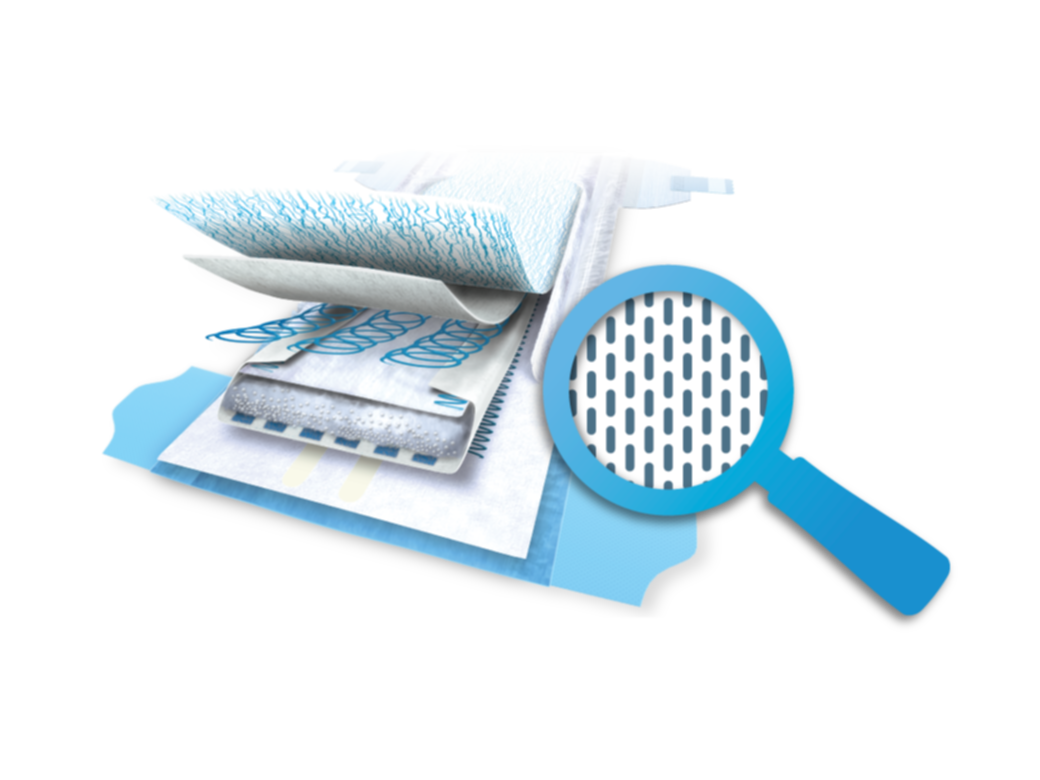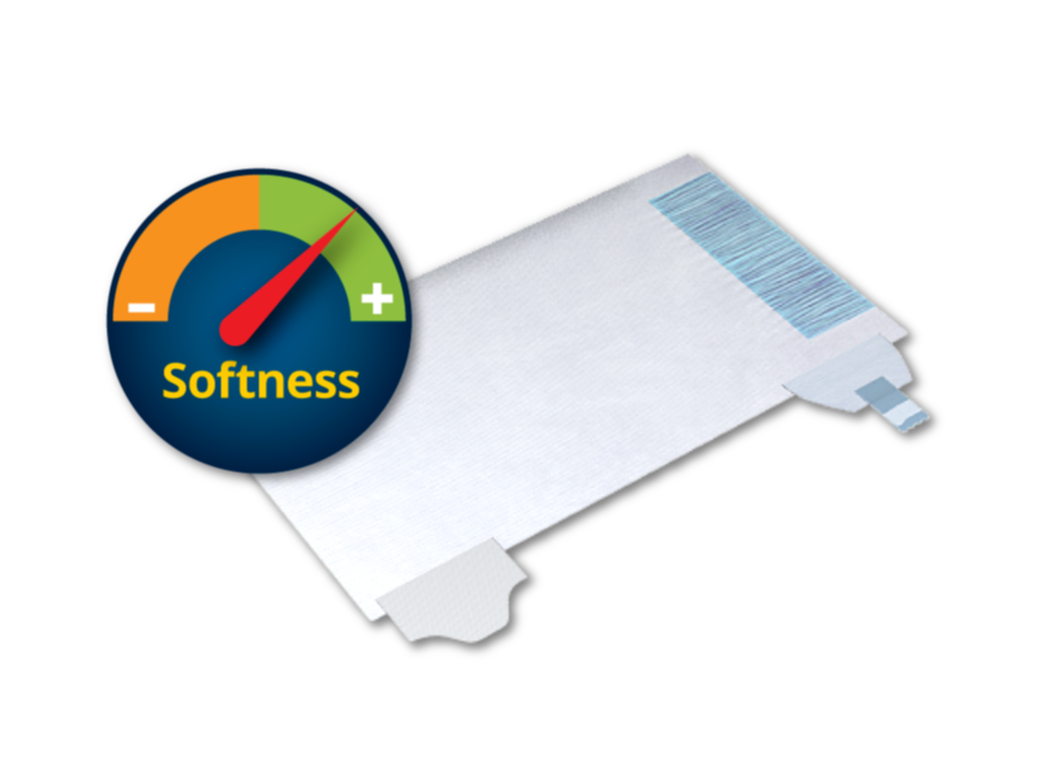Achieving Softness in Disposable Hygiene Products With Smart Adhesive Solutions
For years, expressions like “soft as silk” and “rough as sandpaper” have been used to describe how materials or objects feel. But it is not that simple. What one person may find soft may not be the same for the next person.
Softness is subjective and factors such as personal preferences, perceptions, and even cultural and regional beliefs can shape an opinion on what is pleasing to the touch. For example, Asian populations tend to associate silky with soft. In the Americas, a cotton-like texture is related to softness. These are key things to consider as softness in disposable hygiene products becomes of increasing importance.
What impacts softness in disposable hygiene products?
Several things impact softness in the product. As a first impression, there is the visual appearance, patterns, thickness, and even the sound of the product. All of these things influence a consumer’s perception. These main factors have led manufacturers to focus more on raw materials and manufacturing processes for creating softness, and also on methodologies for measuring softness.
Materials
The raw materials used to create nonwoven fabrics--polymer fibres made from synthetic or natural polymers--significantly contribute to the overall feeling of softness. Polymer fibres that have a smaller diameter produce a greater feeling of softness. In some cases bicomponent fibres, such as those that have a core/sheath structure, can also help increase softness.
The shape of the polymer fibres, such as round, trilobal, or irregular, has a visual effect on how the consumer interprets the softness of the product. The use of surface treatments on the polymer fibres, or topical treatments such as lotions and aloe on the nonwoven fabric, can also increase softness. It is important to note, however, that these treatments can decrease bonding performance, which makes choosing the right adhesive critical.
Process
To ensure the disposable hygiene products feel like cotton and not like plastic, there is a specific way the polymer fibres are processed to create the nonwoven fabric. This is a two-step process: first the fibres are laid to a mat, and then they are bonded together. The laying process of the fibres can be done in three ways: spunlaid, drylaid and wetlaid.
Once the fibres are laid into a mat, they are bonded through chemical bonding, thermal bonding or mechanical bonding. For disposable hygiene, the main process is the combination of spunlaid and thermal bonding, which leads to relatively soft, cost-effective products.
Films
To create a soft, clothlike backsheet film for an absorbent article, a soft nonwoven fabric as described above and a breathable yet watertight film must be combined. There are two types of films typically used today in disposable hygiene: blown films, which are common in diapers produced in the United States, and cast films, which are widely used in diapers produced in Europe.
As mentioned above, the film and the nonwoven fabric need to be combined. Adhesive lamination is a commonly used bonding method to produce backsheet films. Alternative bonding methods are extrusion coating and thermal bonding.
Breathability of the film is a key factor in increasing comfort for the product wearer. This also contributes to the overall perception of softness.
Adhesives help support softness in disposable hygiene products
Adhesives play an important role in supporting softness. As consumers across the globe seek improved softness in disposable hygiene products, Bostik is providing smart adhesive solutions to meet the needs of both users and manufacturers in two main ways:
For example, a diaper topsheet is the first layer that touches a person’s skin. It can be used to carry additives such as lotion or aloe to the skin and it has an impact on how the consumer perceives softness. The adhesive used in the product ensures a reliable bond between the topsheet and other components of the core. This helps prevent absorbent core shifting that could have a negative effect on absorbency, comfort and core integrity
Through innovation and collaboration, Bostik can help manufacturers efficiently and effectively test soft substrates to learn how original softness can be maintained or improved through the bonding process. Full-service testing capabilities on our state-of-the-art coaters saves on downtime and eliminates the hassle of requiring manufacturers to test on their own lines. Using our experience and technical knowledge can also help speed up the material qualification process.
Softness Materials from Bostik Academy
Click the links below to sign-in and access all of our Academy materials.
